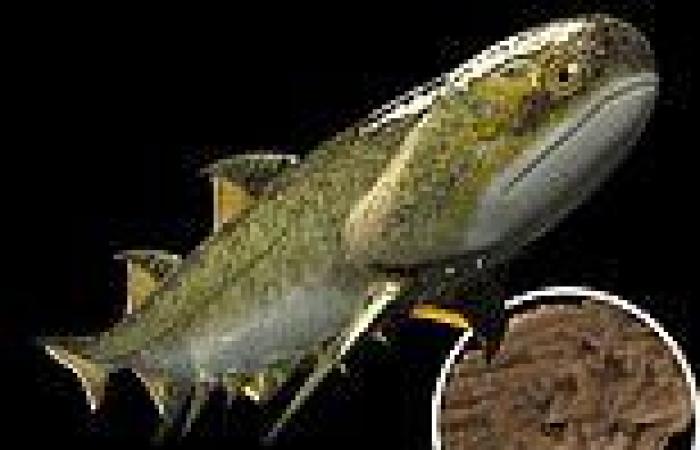
Wednesday 28 September 2022 05:32 PM Armored 'shark' that lived 439 million years ago is humans' oldest jawed ... trends now
An ancient armored 'shark' that roamed the oceans 436 million years ago is believed to be humans' oldest jawed ancestor - predating the previous specimen by 15 million years.
Paleontologists reconstructed tiny skeletal fragments unearthed in China that belonged to a creature with an external body 'armor' and several pairs of fin spines that separate it from living jawed fish like cartilaginous sharks and rays.
The team also uncovered about 20 teeth from this new species named Fanjingshania, allowing them to determine they could have only come from a fish with an arched jaw margin that is similar to those found in modern-day sharks.
The fossils 'help to trace many human body structures back to ancient fishes, some 440 million years ago, and fill some key gaps in the evolution of 'from fish to human,' researchers from the Institute of Vertebrate Paleontology and Paleoanthropology (IVPP) under the Chinese Academy of Sciences said.
This research also produced other fossils, specifically ones that revealed the galeaspids, members of an extinct clade of jawless fish, possessed paired fins.

An ancient armored 'shark' that roamed the oceans 436 million years ago is believed to be humans' oldest jawed ancestor
Corresponding author Professor Zhu Min, of the Chinese Academy of Sciences in Beijing, said in a statement: 'This is the oldest jawed fish with known anatomy.
'The new data allowed us to place Fanjingshania in the family tree of early vertebrates and gain much needed information about the evolutionary steps leading to the origin of important vertebrate adaptations such as jaws, sensory systems and paired appendages.'
Scientists in 2013 said they had found a 419-million-year-old fish fossil in China that disproved the long-held theory that modern animals with bony skeletons (osteichthyans) evolved from a shark-like creature with a frame made of cartilage.
Humans' ancient ancestor was recovered from bone bed samples of the Rongxi Formation at a site in Shiqian County of Guizhou Province, South China.
Fanjingshania had several features that differ from any known vertebrate, specifically dermal shoulder girdle plates that fuse as a unit to a number of spines—pectoral, prepectoral and prepelvic.

Paleontologists reconstructed tiny skeletal fragments unearthed in China. Pictured is a fragment of the pectoral dermal skeleton (part of a pectoral spine fused to shoulder girdle of the new species





